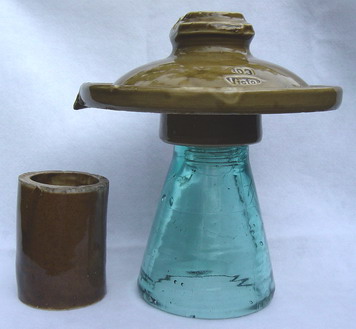
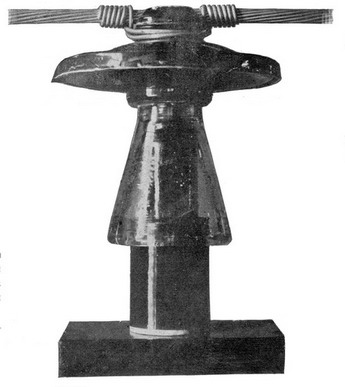
Rare Porcelain Display (page 4)
Rare Porcelain Display: Page 1 Page 2 Page 3 Page 5 Page 6 Page 7


This M-2795 with "303" marking is undamaged and complete with original sulfur cement holding the Brookfield glass base in the porcelain collar that is glazewelded to the top. The porcelain pin sleeve is one of very few ever located. The photo on the right is from the August 1901 Journal of Electricity, Power and Gas and shows the M-2795 mounted on a pin with pin sleeve.
The earliest Fred Locke M-2795 is the one with the "303" incuse marking. Several broken 303 specimens have been found in Oregon and California, but only two very near mint specimens exist. The one in the display also has the rare pin sleeve. Only two undamaged specimens are known. The 303 was the original catalog number. Soon after this insulator entered production, Fred Locke decided to offer an extensive line of insulators with glass bases. In order to fit smaller styles in the new 300-series, he changed the catalog number from 303 to 316.
The two incuse markings used on the M-2795 "303". Broken tops found in Oregon and northern California show that actually the above markings are four separate marking devices, and combinations of the four were used showing inconsistency and no standard arrangement.
The white M-2795 shown in the display is the only specimen known. No broken specimens have ever been found, which would indicate where this particular specimen may have been used. It is suspected that it was used indoors at powerhouse or substation. This specimen is dated December 7, 1900 and the #4-1 marking. It is in remarkable condition with the only damage being the broken collar underneath the top skirt. It was lovingly cleaned and repaired by Mike Spadafora and Paul Greaves. The white M-2795 was obtained by prominent collector/dealer Dee Willett in the early 1970's and sold to my brother Edward Gish and his wife Judy.
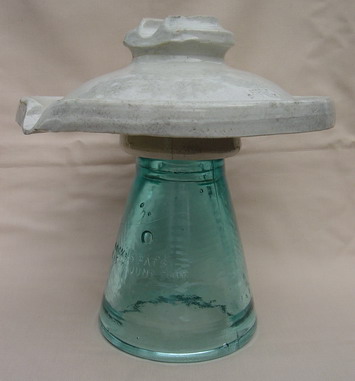
The only known M-2795 with white top. The 4-date and manufacturing date markings are shown below.
Very few insulators from the 300 series have survived. All are extremely rare and desirable. The photo below shows the specimens in the display. M-2335 and M-2336 have two spouts and M-2335A has only one. The spouts directed rainwater away from the crossarm. This unique specimen of M-2336, with the crown neatly cut off, was shown in a 1941 Locke advertisement.
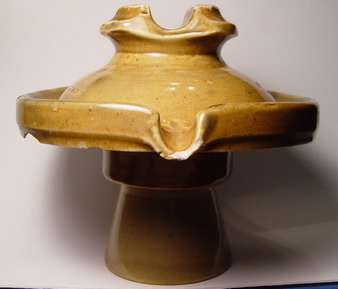
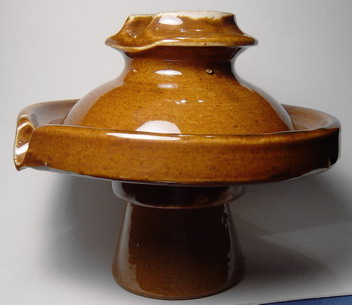
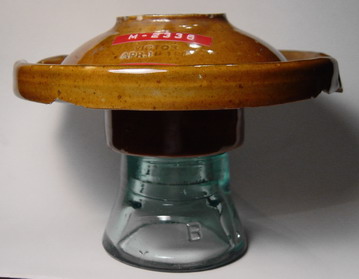
M-2335 (2 spouts), M-2335A (1 spout), and M-2336 (2 spouts)
The photos below show a unique small diameter glass base compared to the usual glass base used with M-2795. The height is about the same, but note the much thicker glass. Research has not revealed which style porcelain top was used. All the top shells from known Fred Locke insulators are out of proportion with this much smaller diameter base. This will probably remain a mystery.
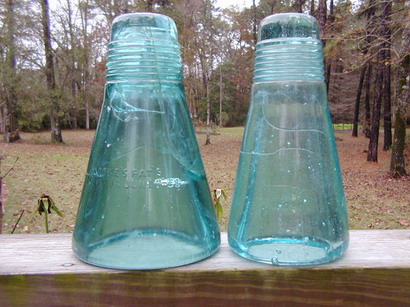
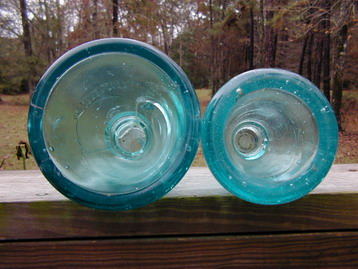
Normal glass base (left) for M-2795 compared to smaller, thicker version (right).
A unique Fred Locke specimen is a crude 3-part multipart insulator similar to M-3060 (shown on a previous page). This history of this specimen is not known, but it was from the Lew Hohn collection.
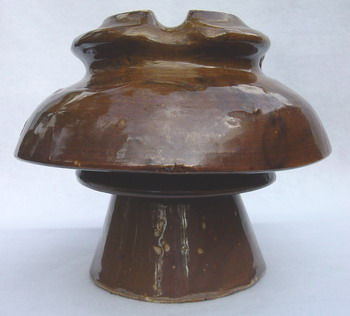
Fred Locke 3-part insulator similar to M-3060 with marking #7-1.
When Fred Locke "retired" from Locke in late 1904, legend has it that an employee made the Locke Pigs as a retirement gift. It could have been made by Fred Locke himself. Fred Locke "retired" because he was losing control of his company to a group of local financial business men who knew little about making insulators. It has been speculated with good factual basis that the pigs represent these board of directors whose only interest was making money - represented by the pig trough. The pigs are sitting around the pig trough waiting for more to be put in the trough so they could gobble it up. One of the Fred Locke granddaughters, Mrs. Sybil-Ann Kimble, recalls seeing the pigs on her father's desk and enjoyed putting button in the trough.
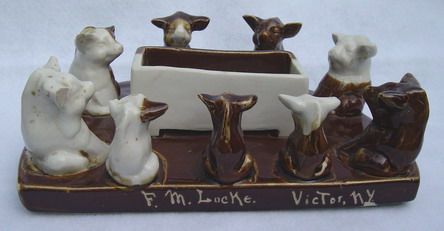
Locke Pigs given to Fred Locke when he "retired" in late 1904.
Rare Porcelain Display: Page 1 Page 2 Page 3 Page 5 Page 6 Page 7